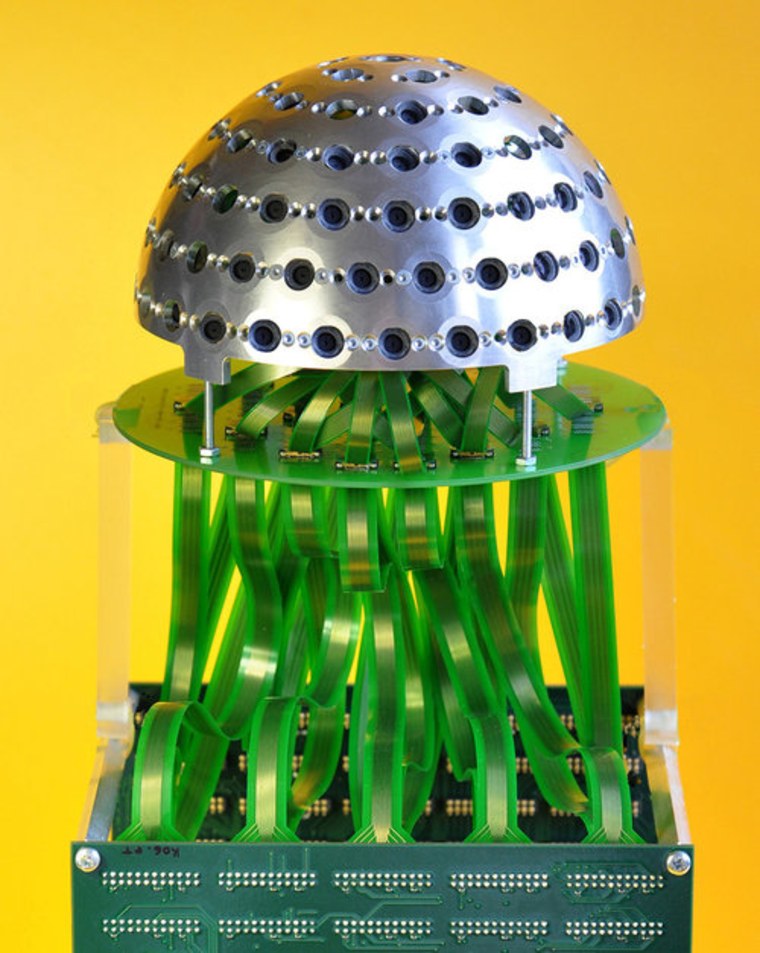Bzzz ... bzzz ... bzzz ...
Wait! Before you swat that annoying fly, consider this: Its eyes inspired the invention of a camera with a 360-degree view on the world and the ability to reproduce images in 3-D.
The applications are seemingly limitless, ranging from enhanced robot navigation and surveillance to 3-D movies and immersive realities for video gamers, according to co-inventor Pierre Vandergheynst, an electrical engineer at Ecole Polytechnique Federale de Lausanne in Switzerland.
"Imagine a sporting event where you will be able to watch the event as being one of the players. You would be able to walk on the soccer field, you would be able to stand where the goalkeeper is," he said.. "Imagine being at a concert and decide to see the concert from the audience and then suddenly walk on stage and get closer to the guitarist or the pianist. This would be possible with such devices."
Vandergheynst said the technology overcomes two main problems of traditional cameras: the fact that they observe only a fraction of the scene in a specific direction and the camera's traditional lack of depth. He goes into detail in this video news release:
Taking a cue from the common housefly's eyes, which are composed of thousands of spherical photoreceptors, Vandergheynst and colleague Yusuf Leblebici packed more than 100 cameras similar to those used in mobile phones onto an orange-sized metallic sphere. The result is a camera that sees information located all around it. At the same time, special algorithms calculate the distance to the objects it sees, enabling the creation of an accurate 3D reconstruction.
This contrasts with traditional 3-D images, which generally start with 2-D images made with two lenses that are then overlaid to generate a 3-D effect when seen with special glasses. Newer technology is making 3-D imagery possible with single-lens, point-and-shoot cameras such as the Sony WX5 and TX9.
But the 360-degree camera that sees in 3-D "is likely to change the entire field of image acquisition, with a huge range of potential applications," Leblebici predicted in a news release.
And for that we have that fly … bzzz, bzzz … to thank.
Swat?
More on vision technology (and insects):
- Seeing triple: 3 types of 3-D glasses
- Animal eyes inspire new technology
- Baby diving beetles use bifocals
- Ancient 'unicorn' fly had five eyes
John Roach is a contributing writer for msnbc.com. Connect with the Cosmic Log community by hitting the "like" button on the Cosmic Log Facebook page or following msnbc.com's science editor, Alan Boyle, on Twitter (@b0yle).
